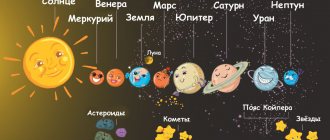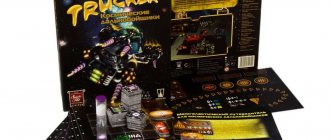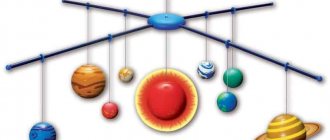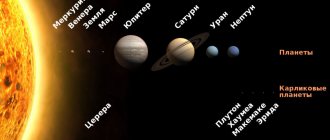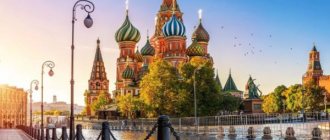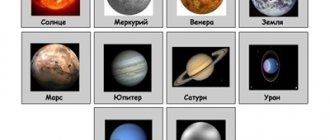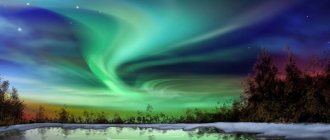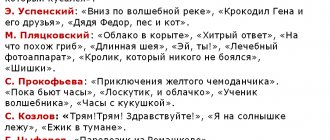When we raise our eyes to the sky, we see a lot of interesting things: during the day - the bright sun, airy clouds, a rainbow after rain or thunderclouds, and at night we watch the moon and admire the twinkling of many stars. The huge world above our heads is called the Universe or space. Space is so big that scientists still don't know much about it. For many years, people have been exploring outer space with the help of telescopes and spacecraft that explore the far corners of the Universe. Thanks to these inventions, we learned a lot of interesting things: what is the size of the sun, is it possible to live in space, and how long does it take to fly to other stars. However, the Universe is so huge and diverse that there are still many amazing discoveries ahead.
Development and education of children from 2 to 11 years old in a playful way
Start practicing right now
Start practicing
What is the Sun?
The sun that we see every day is a large and bright star. And what is it? A star is a huge hot ball of gas. There are a lot of different stars in space, but they are so far from us that they seem to us like small luminous points. The Sun is the closest star to us, so we see it very well. The bright and hot Sun gives light and warmth to all living things - from trees and flowers to animals and people.
Our home is planet Earth
If the Sun is a ball of gas, then maybe we also live on a star? Of course not. Under our feet there is a hard surface on which we can walk, run, rollerblade and ride a car. This cannot be done on the Sun, because it consists of gas. What then should we call the place where we live? Welcome to planet Earth! A planet is a space object that looks like a huge ball. There are several other planets near the Earth, and they are all very different: large and small, cold and hot, fast and slow. Let's get to know them!
Sun
The Sun is the star around which all the planets and satellites in the solar system revolve. It consists of hydrogen and helium. The age of the Sun is 4.5 billion years, it is only in the middle of its life cycle, gradually increasing in size. Now the diameter of the Sun is 1,391,400 km. In just the same number of years, this star will expand and reach the orbit of the Earth.
The sun is the source of heat and light for our planet. Its activity increases or becomes weaker every 11 years.
Due to the extremely high temperatures on its surface, a detailed study of the Sun is extremely difficult, but attempts to launch a special device as close to the star as possible continue.
Planets of the Solar System
In addition to the Earth, there are many other planets in space, but there are very few of them near us - only eight. These planets, together with the Earth, revolve around the star closest to us - the Sun. It attracts planets to itself as if they were its relatives. Scientists called such a cosmic family the Solar System. There are eight planets in the solar system. If you arrange them from closest to the Sun to the farthest, then the first will be Mercury, the second will be Venus, the third will be Earth, the fourth will be Mars, the fifth will be Jupiter, the sixth will be Saturn, the seventh will be Uranus, and the eighth planet will be Neptune. Planets are not just are close to the Sun, and all the time they revolve around it along their path, as if they were dancing in a circle. This path is called an orbit. Each planet has its own orbit, for example, the Earth makes a full revolution around the Sun in 365 days or, in another way, in one year. Did you know that each planet not only revolves around the Sun, but also rotates around its axis like a top? We call one revolution around its axis a day. On Earth, a day lasts 24 hours, but on other planets, a day passes either faster or much longer.
Division into groups
When examining the structure of the solar system with schoolchildren, it can be noted that all planets are divided into groups:
- terrestrial group;
- gas giants.
The first group includes the following planets: Venus, Mercury, Mars, Earth. They are small in size, have a rocky surface, and are closest to the Sun.
The gas giants include: Neptune, Uranus, Saturn, Jupiter. These planets are characterized by large sizes. Some have rings that are made up of icy dust and rocky chunks.
Nimble Mercury
Mercury is closest to the Sun - it is the smallest planet in the solar system. Mercury orbits the Sun the fastest, but it moves much slower on its axis. Because of this, it is always hot on one side, because the Sun is very hot. On the other side, on the contrary, it is very cold, because the sun's rays almost do not reach there. That's how amazing small and nimble Mercury is.
Dangerous Venus
In second place from the Sun is the planet Venus. It is very similar in size to our Earth, but people will not be able to live there. The air of Venus contains many poisonous gases that are impossible to breathe. And the surface of the planet gets very hot, so there is always intense heat there. Astronauts cannot go to explore Venus because the heat would immediately melt the rocket. This is the hottest planet in the solar system!
Venus
This planet is the second farthest from the Sun. It is close in size to the Earth, its diameter is 12,104 kilometers. As for the other parameters, they differ significantly from our planet.
The length of a day on Venus is 242 Earth days, the year lasts 255 days. 95% of the atmosphere is carbon dioxide, which is why Venus creates a greenhouse effect, resulting in a temperature of 475 degrees Celsius. It was possible to detect 0.1% oxygen and 5% nitrogen in the atmosphere.
There is practically no liquid on Venus; it is covered with frozen basaltic lava. There is an interesting version according to which there were once oceans on the planet, but due to the high temperature, they evaporated and the solar wind carried the steam into outer space.
Weak winds are observed near the planet, but at an altitude of 50 kilometers, their speed increases significantly and reaches 300 m/s.
A large number of hills and craters were discovered on the planet, which resemble the earth's continents. The formation of craters is due to the fact that the planet once had a less dense atmosphere.
As a distinctive feature of Venus, one can note its movement from east to west, which is unusual for other planets. The reason for this anomaly is the ability of its atmosphere to completely reflect sunlight. Venus has no natural satellites.
Welcome to Earth!
We have already flown past Mercury and Venus, which means we will see Earth very soon. Our planet will be the third from the Sun. In size, the Earth is not the largest and not the smallest, but it is very different from others. With what? Our planet is the only place in the solar system where life exists. Thanks to its location from the Sun, water and clean air, living organisms began to appear on Earth many thousands of years ago. Only here you can see plants and animals, hear birds singing and visit many cities and countries where people live.
There is an interesting “neighbor” near our planet - the Moon. This is what we see in the sky every night. The Moon is a satellite of the Earth, which means that it revolves around our planet. The moon is so close to us that astronauts have even been there. Perhaps very soon scientists will begin to build special bases on the Moon where people can live.
Expanding the boundaries of the study of the Universe
The story about space and the Universe cannot be allowed to be boring. It is important to captivate the child. Arouse his interest in the subject. Only superficial knowledge may not satisfy the needs of a preschooler. We should tell you about Pluto, which was considered the 9th planet in the solar system. It was later removed from the list. The child will be interested to hear about asteroids, which are fragments of dead planets. Also interesting is the origin of comets that fly by with tails of gases. A separate topic should be a story about the Earth and its structure. The cosmic body consists of a core, mantle, and shell. You can compare it to the fruit of a tree, which has a seed and pulp. Everything should be presented in a playful way and then the child will find it interesting and exciting.
Iron Mars
The fourth planet from the Sun is called Mars. It is unusual in that its entire surface is covered with iron. Because of this, the planet has a reddish-orange hue. Although Mars is smaller than Earth, a day on it lasts almost like ours - 24 hours 37 minutes. But the Martian year is much longer than the Earth's. In search of an answer to the question “Is there life on Mars?”, scientists have created special vehicles - rovers that walk on the surface of Mars and study the red planet. However, so far they have not been able to find signs of life on Mars.
Methods of representing space
Not every preschooler is able to understand what black holes are, what celestial bodies are made of, and what properties they have.
In order to explain, it is necessary to develop tactics. Firstly, the information must be truthful. Secondly, you cannot speak in serious language or use special terms. Otherwise, the child will quickly lose interest in the subject and will not want to continue a conversation he does not understand.
There are methods by which you can popularly teach children about the planets. Experience suggests that children are interested in conversation, supported by the display of pictures. You can use photographs of the starry sky, images of planets, constellations. It’s very good when dad draws the sun and talks about it. Moreover, the luminary should be depicted not as a yellow circle with rays emanating from it, but as a planet whose atmosphere contains hydrogen and helium.
A child must know the truth about the Universe. That people know little about the solar system and space. The sun is inaccessible due to high temperature, etc. In the same vein, we should talk about other planets and celestial bodies.
A model of celestial bodies can be depicted using plasticine. It's attractive and understandable. The main aspect is the child’s interest in the subject. His curiosity and desire to know more. In the case when the baby asks a question to which dad does not know the answer, it is necessary to postpone the consideration until tomorrow. And in the allotted time, prepare yourself for the correct answer.
Giant Jupiter
And we are flying further and further from the Sun and approaching the fifth planet, which is called Jupiter. It is the largest planet in the solar system. If you weigh all the planets together, Jupiter will be much heavier, that’s how huge it is! But an amazing fact: the giant does not have a solid surface to walk on, because Jupiter is a huge ball of gas. And on this planet strong winds constantly blow, which turn into storms, hurricanes and storms. These vortices are very clearly visible in photographs of the planet taken by space instruments. Do you know how many moons Jupiter has? Remember, the Earth has only one - the Moon, and Jupiter has almost 80 of them! Large and small, covered in ice, mountains and volcanoes, they all revolve around the gas giant. And Jupiter itself is not far behind - it spins around itself like a top, very quickly. Therefore, a day there lasts only 10 hours. This is what an amazing ruler of the sky there is among the planets of the solar system.
Gas giants
Jupiter
This planet is the largest in the solar system and has a diameter of 139,822 km, which is 19 times larger than Earth. A day on Jupiter lasts 10 hours, and a year is approximately 12 Earth years. Jupiter is mainly composed of xenon, argon and krypton. If it were 60 times larger, it could become a star due to a spontaneous thermonuclear reaction.
The average temperature on the planet is -150 degrees Celsius. The atmosphere consists of hydrogen and helium. There is no oxygen or water on its surface. There is an assumption that there is ice in the atmosphere of Jupiter.
Jupiter has a huge number of satellites - 67. The largest of them are Io, Ganymede, Callisto and Europa. Ganymede is one of the largest moons in the Solar System. Its diameter is 2634 km, which is approximately the size of Mercury. In addition, a thick layer of ice can be seen on its surface, under which there may be water. Callisto is considered the most ancient of the satellites, since it is its surface that has the largest number of craters.
Saturn
This planet is the second largest in the solar system. Its diameter is 116,464 km. It is most similar in composition to the Sun. A year on this planet lasts quite a long time, almost 30 Earth years, and a day lasts 10.5 hours. The average surface temperature is -180 degrees.
Its atmosphere consists mainly of hydrogen and a small amount of helium. Thunderstorms and auroras often occur in its upper layers.
Saturn is unique in that it has 65 moons and several rings. The rings are made up of small particles of ice and rock formations. Ice dust perfectly reflects light, so Saturn's rings are very clearly visible through a telescope. However, it is not the only planet with a diadem; it is just less noticeable on other planets.
Uranus
Uranus is the third largest planet in the solar system and the seventh from the Sun. It has a diameter of 50,724 km. It is also called the “ice planet”, as the temperature on its surface is -224 degrees. A day on Uranus lasts 17 hours, and a year lasts 84 Earth years. Moreover, summer lasts as long as winter - 42 years. This natural phenomenon is due to the fact that the axis of that planet is located at an angle of 90 degrees to the orbit and it turns out that Uranus seems to be “lying on its side.”
Uranus has 27 moons. The most famous of them are: Oberon, Titania, Ariel, Miranda, Umbriel.
Neptune
Neptune is the eighth planet from the Sun. It is similar in composition and size to its neighbor Uranus. The diameter of this planet is 49,244 km. A day on Neptune lasts 16 hours, and a year is equal to 164 Earth years. Neptune is an ice giant and for a long time it was believed that no weather phenomena occur on its icy surface. However, it was recently discovered that Neptune has raging vortices and wind speeds that are the highest among the planets in the solar system. It reaches 700 km/h.
Neptune has 14 moons, the most famous of which is Triton. It is known to have its own atmosphere.
Neptune also has rings. This planet has 6 of them.
Mysterious Saturn
Welcome to the sixth planet from the Sun called Saturn. Just like Jupiter, Saturn is made of gas, but it is much smaller in size than its neighbor. But Saturn has giant rings that make it easy to distinguish it from other planets. These rings are so huge that they can be seen even through a telescope. Scientists have been studying Saturn for many years, but until now they have not been able to understand how mysterious rings appeared around this planet. One thing is known: they all consist of particles of ice, dust, and stones.
Some features of transferring knowledge about space to children
Preschoolers are interested in space, but they cannot perceive and understand all the information correctly. At first, they are interested in:
- what the Sun is made of;
- what role does the luminary play in the life of the universe;
- for what reasons is our system called solar;
- how the planets are located;
- information on each planet, etc.
The most inquisitive kids are interested in questions:
- what is a constellation?
- what they are like;
- location of constellations in the sky, etc.
Cold Uranus
Ahead is Uranus, the seventh planet of the solar system. Uranus is called the coldest planet, and there are also rings around it, but not as large as Saturn’s. Uranus is larger in size than Earth, but does not have a solid surface, so it can be called a gas planet. If you look at Uranus from space, it will be colored in an unusual blue-green color. This happens because there is a lot of methane gas on this planet, which gives the planet an incredibly beautiful hue.
LiveInternetLiveInternet
There is one simple way for children to remember the planets of the Solar System. However, for adults too. It is very similar to how we remember the colors of the rainbow. All children love various counting rhymes, thanks to which information remains in memory for a long time.
To memorize the planets of the solar system, we suggest you teach the children a poem that you can compose yourself, or use the work of A. Hight:
In order, all the planets can be named by any of us: One - Mercury, Two - Venus, Three - Earth, Four - Mars. Five is Jupiter, Six is Saturn, Seven is Uranus, followed by Neptune.
Think back to how you memorized the colors of the rainbow as a child. The same principle can be applied to the names of the planets. Construct a phrase in which each word begins with the same letter as a planet in the solar system in the order of its location from the Sun. For example: We are Mercury We will meet Venus Tomorrow My Earth Mars Young Jupiter Satellite Saturn I am flying away Uranus For a short time
Neptune
This is just an example, in fact, you can come up with anything, as long as it is close to your child’s spirit and he easily remembers the entire sentence. Now that we have figured out exactly how to present any information to children, we can move on to the direct knowledge that you will teach your young astronomers.
Finally, an interesting and simple story for children about what the solar system is.
The solar system is all the cosmic bodies that revolve around the Sun according to their clearly defined trajectories. These include 8 planets and their satellites (their composition is constantly changing, as some objects are discovered, others lose their status), many comets, asteroids and meteorites. History of the emergence of planets There is no definite opinion on this matter, there are only theories and guesses. According to the most common opinion, about 5 billion years ago, one of the clouds of the Galaxy began to shrink towards the center and formed our Sun. The formed body had a tremendous gravitational force, and all the particles of gas and dust around began to connect and stick together into balls (these are the current planets).
The sun is not a planet, but a star. The source of energy and life on Earth.
The Sun as a star and the center of the Solar System The planets in their orbits revolve around a huge star called the Sun. The planets themselves do not emit any heat, and if it were not for the light of the Sun that they reflect, then life on Earth would never have arisen. There is a certain classification of stars, according to which the Sun is a yellow dwarf, approximately 5 billion years old. Satellites of planets The solar system does not consist only of planets; it also includes natural satellites, including the well-known Moon. In addition to Venus and Mercury, each planet has a certain number of satellites, today there are more than 63. New celestial bodies are constantly being discovered thanks to photographs taken by automatic spacecraft. They are capable of detecting even the smallest satellite with a diameter of only 10 km (Leda, Jupiter). Characteristics of each planet in the solar system
Procession of Mercury's orbit 1. Mercury. This planet is closest to the Sun; in the entire system it is considered the smallest. Mercury has a hard surface, like all four inner planets (those closest to the center). It has the highest rotation speed. During the day, the planet practically burns under the sun's rays (+350˚), and freezes at night (-170˚).
2. Venus. This planet is more similar to Earth than others in its size, composition and brightness. But the conditions are very different. The atmosphere of Venus consists of carbon dioxide. There are always a lot of clouds around it, which makes observation difficult. The entire surface of Venus is a hot rocky desert.
3. Earth is the only planet on which there is oxygen, water, and therefore life. It has an ideal location in relation to the Sun: close enough to receive light and heat in the right quantities, and far enough not to be burned by the rays. It has an ozone layer that protects all living things from radiation. The planet is home to millions of species of living beings , including humans.
Comparison of the Earth with other planets of the solar system
The Earth has one satellite - the Moon.
4. Mars. Some scientists have suggested that life also exists on this planet because it has a number of similarities with Earth. But numerous studies have found no signs of life there. At the moment, two natural satellites of Mars are known: Phobos and Deimos.
5. Jupiter is the largest planet in the solar system, 10 times larger than Earth in diameter and 300 times larger in mass. Jupiter consists of hydrogen, helium and other gases and has 16 satellites.
6. Saturn is the most interesting planet for children, as it has rings that are formed from dust, stones and ice. There are three main rings around Saturn, each about 30 meters thick.
7. Uranium. This planet also has rings, but they are much more difficult to see and only appear at certain times. The main feature of Uranus is its manner of rotation, performed in the “lying on its side” mode.
8. Neptune. Astronomy today calls this planet the last in the solar system. Neptune was discovered only in 1989, since it is located very far from the Sun. Its surface looks blue from space, which cannot but amaze us. Until 2006, there were 9 planets, including Pluto. But according to the latest scientific data, this space object is no longer called a planet. It’s a pity... Although, it has become easier for children to remember.
Tyts astronomy for schoolchildren https://astro.altspu.ru/SolarSys/
tyts https://v-kosmose.com/kosmos-dlya-detei/
